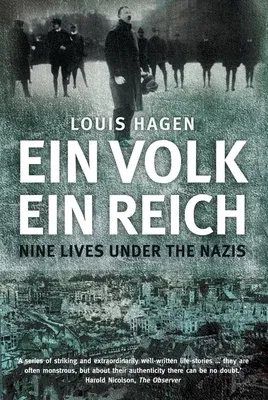Through the lives of nine ordinary Germans, tracing their experiences
of Nazism from the first hopeful days until the horrors of the Russian
occupation of Berlin, Louis Hagen provides a salutary and unforgettable
record of the German people in the shadow of the swastika When Louis
Hagen returned to Berlin immediately after the war, he had survived
incarceration and torture in a German concentration camp as well as the
Battle of Arnhem, seen his family flee their home, and had many
relatives die at the hands of the Third Reich. He wanted to understand
why so many Germans had welcomed the Nazi Party, and whether they were
they now humbled and wiser. Hagen interviewed nine people he had known
before the war who represented a wide spectrum of German society--an SA
officer, a businessman, a doctor, a socialite, a journalist, a
professional soldier, an SS wife, a member of the Hitler Youth, and a
mischling, or half Jew. Four were Nazis, three were collaborators, and
two were anti-Nazi. How could the Baroness sent to Theriesenstadt
concentration camp hold salons for ex-Nazis after the war? The very fact
that none of these people was a high-ranking Nazi official or a survivor
of the Holocaust provides an insight into the Third Reich that is a
revelation even for those who know this period of history intimately.

